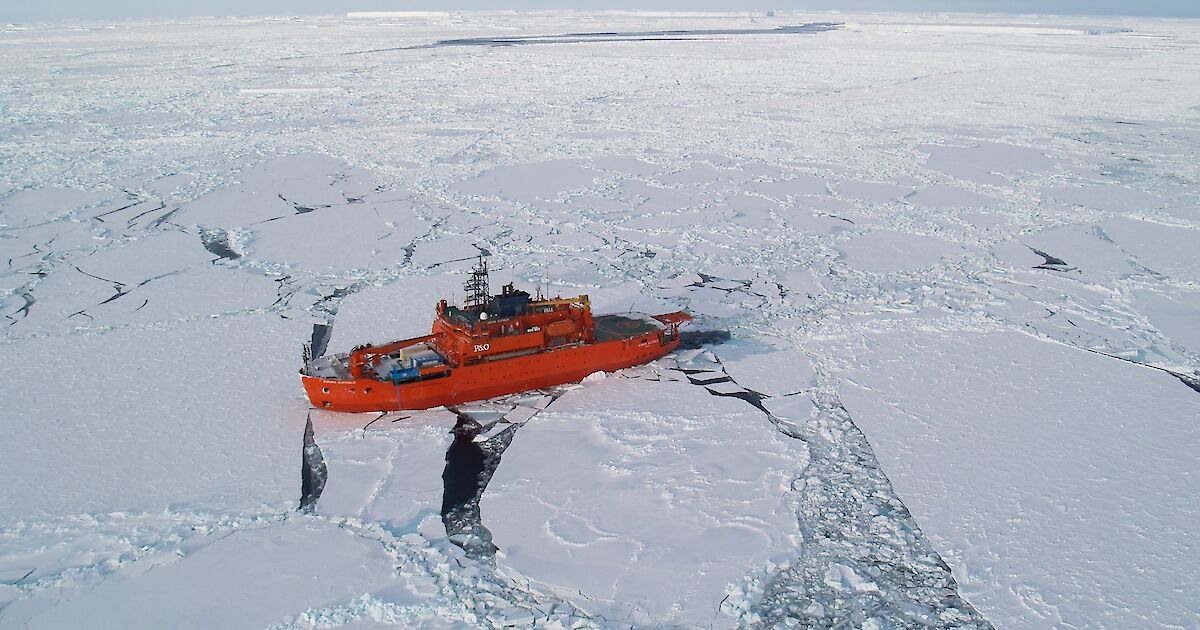As per the Hutton News from a week ago (ps if you want to catch up on them you can go to http://media.forthemug.com ) - Canonn Interstellar boffins are bored and keep "experimenting" on their mugs. These are destructive tests and the mugs aren't surviving, so we need to keep them restocked until new Thargoid mysteries arrive.
Your Update:
HOT-MESS Space Mission
39.5% complete
nearly 22,000 mugs delivered
Let's see if we can bust the 50% mark by the end of the weekend!
HOT-MESS aboard the Aurora Australis
The operation to mug the Antarctic is going well.
A short summary
Sailed 2 mugs from Tasmania aboard the Aurora Australis
Did some science to do with phytoplankton
Arrived - got quarantined due to possible MODS (aka Coronavirus aboard)
Had to treat all human contact with those in Davis station as "non breeding seals" - i.e. keep 5m from them at all times
Offloaded the SRV and supplies
Did some "stooging" - chugging up and down in a 70kt storm with 8m waves for a bit
Snow arrived, leading the team on board to go a little "mug mad":

They finished resupply and dropped passengers, then moved on to a whale mooring, plus did some science with climate monitoring buoys.
They use another one to monitor whale song in the southern oceans.
The "whale mooring" sensor (the big one that looks like a limpet) It sinks, listens to whalesong and can detect individual whales from 1000km in good conditions (calm seas, no wind, no huge icebergs crashing into each other) down to 100km in "normal" conditions and even lower in bad ones. Usually collected once a year, but good power management and excellent batteries mean that it can last as long as 3 years. They arrive at its location, ping a signal off it and it rises to the surface for collection. All very cool.
One of the pieces of equipment they're deploying is an Argo buoy. The climate sensor buoys (of which there are around 3000 globally) monitor sea temperatures and bob up and down. They collect data underwater, then bob to the surface and update the science team via satellite, then sink again and carry on recording - they do this around 200-300 times in their lifetime providing vital climate data.
Amy explaining some of the science mission they're up to:
Source: https://twitter.com/AusAntarctic/status/1224458192995807232?s=20
Short video with a whale mooring and a MUG!
Source: https://twitter.com/AusAntarctic/status/1225554004127756288





The team are now moving along to their next stop - Mawson (for the 2nd mug delivery!)
Other than following them on Twitter - you can keep an eye on the daily "sitreps" - which Andy and Amy are signing off with a "FTM"

 secure3.aad.gov.au
secure3.aad.gov.au
There's a link to their daily position map as well.
We'll keep you updated.
Your Update:
HOT-MESS Space Mission
39.5% complete
nearly 22,000 mugs delivered
241 commanders taking part so far, delivering an average of 90 mugs each7000 systems now declared MODS free
Let's see if we can bust the 50% mark by the end of the weekend!
HOT-MESS aboard the Aurora Australis
The operation to mug the Antarctic is going well.
A short summary
Sailed 2 mugs from Tasmania aboard the Aurora Australis
Did some science to do with phytoplankton
Arrived - got quarantined due to possible MODS (aka Coronavirus aboard)
Had to treat all human contact with those in Davis station as "non breeding seals" - i.e. keep 5m from them at all times
Offloaded the SRV and supplies
Did some "stooging" - chugging up and down in a 70kt storm with 8m waves for a bit
Snow arrived, leading the team on board to go a little "mug mad":
They finished resupply and dropped passengers, then moved on to a whale mooring, plus did some science with climate monitoring buoys.
They use another one to monitor whale song in the southern oceans.
The "whale mooring" sensor (the big one that looks like a limpet) It sinks, listens to whalesong and can detect individual whales from 1000km in good conditions (calm seas, no wind, no huge icebergs crashing into each other) down to 100km in "normal" conditions and even lower in bad ones. Usually collected once a year, but good power management and excellent batteries mean that it can last as long as 3 years. They arrive at its location, ping a signal off it and it rises to the surface for collection. All very cool.
One of the pieces of equipment they're deploying is an Argo buoy. The climate sensor buoys (of which there are around 3000 globally) monitor sea temperatures and bob up and down. They collect data underwater, then bob to the surface and update the science team via satellite, then sink again and carry on recording - they do this around 200-300 times in their lifetime providing vital climate data.
Amy explaining some of the science mission they're up to:
Source: https://twitter.com/AusAntarctic/status/1224458192995807232?s=20
Short video with a whale mooring and a MUG!
Source: https://twitter.com/AusAntarctic/status/1225554004127756288
The team are now moving along to their next stop - Mawson (for the 2nd mug delivery!)
Other than following them on Twitter - you can keep an eye on the daily "sitreps" - which Andy and Amy are signing off with a "FTM"

6 Feb 2020, V3 – Shipping and flight schedules – Australian Antarctic Program
We did our last southbound clock change and are now on UTC+7 the same as Mawson. The whale mooring retrieval and deployment were complete success.
There's a link to their daily position map as well.
We'll keep you updated.
Last edited:




